Thirteen Badr and massacre of Iranians (Purim, Purim)
The story of Esther and the mythmaking of belligerent Iran
The story of "Esther and Mordecai" is one of the famous Jewish stories that takes place in the territory of an Iranian king named "Achshurash".. This story is originally found only in Jewish sources and cannot be proven historically because it is in serious conflict with other sources, including authentic sources.. Some researchers consider this story to be influenced by Babylonian and Elamite myths. According to this story, Jews celebrate a festival called "Purim" every year. But these days in Iran, distorted stories of this story have become popular, which are contrary to the ones included in Jewish sources.. In short, most of these distorted stories emphasize the killing of innocent people by the Jews. Also, the connection of the "Thirteen Door" celebration to this issue has become common, which cannot be proven in any way. There is no report in any source about the connection of the Thirteenth Day celebration to this issue, and Purim and Thirteenth Day are not the same in terms of time.. In general, the story of "Esther and Mordecai" that is mentioned in Jewish sources is more like a legend and cannot be historically proven in any way, the distorted stories have no basis.. Some foreigners pay attention to one type of approach to this story, which indicates anti-Iranianism, and on the other hand, some inside Iran have a different type of approach to this story, willingly or unwillingly, and by promoting it, false cases go down in history. and Iran's civilization. Some people inside Iran may pay attention to distorted stories because of confronting Zionism, but maybe this gives more excuses to the hands of foreigners.. At the same time, distorting the story of Esther and linking it to the Thirteenth Door is welcomed by anti-Iranians..
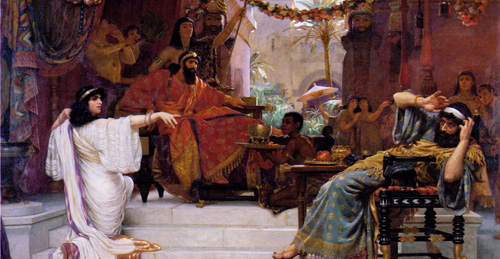
Introduction
Esther's story; An old issue that is still being talked about in every corner and has even taken on special features, to the extent that the anti-Iranian approach has played an important role when talking about this story.. It seems that some foreigners pay attention to a type of approach that indicates anti-Iranianism, and inside Iran, some willingly or unwillingly, have another type of approach to this story, and by promoting it, they add false facts to history and They attribute Iranian civilization.
As you know, every year the Jews celebrate a day called "Purim", which is motivated by the legendary story of Esther.. In short, this story is about how the Jews were freed from the massacre and destruction. We should not forget that the story of Esther, under the influence of Hellenism, has taken on an anti-Iranian character, so that it is different even from other parts of Jewish sources that have a positive approach to Iranian kings and civilization..
But some people inside Iran, by distorting this story, state false things about Iran's history, and even without considering acceptable documents and evidence, they consider this story to be the reason for the thirteen doors.. The claim of connection between "Esther's story" and "thirteen doors" is raised while the story of Esther has many contradictions historically and no historical source reports the connection of the thirteen doors with Esther's story and the Purim celebration; Even the date of Purim is different from the Thirteenth Feast.
Some of these people may have an anti-Iranian approach to weaken the current Iran, and some of them may do this with the aim of confronting Zionism, while it is appropriate to be cautious in this matter so that our history and culture are not harmed..
It is as if we are facing an issue that different groups, who are even strongly opposed to each other, are taking advantage of it with different approaches.. In the meantime, Iran's history is being distorted, and in this situation, anti-Iranists take the most advantage to weaken Iran, so that many films and works of art related to this story have been created as if on purpose..
In this article, an attempt is made to investigate the issue of how the myths of Iran are created and exported from the story of Esther by examining historical sources.. First, the story of Esther, which is found in Jewish sources, is examined and criticized from a historical point of view, and then we will examine the distorted stories of it.. We also try to have a special look at Sizdeh Bedar, because this beautiful festival has a special place among the people of Iran today.. Of course, this discussion is more detailed, but here we try to mention the issues.
What does the book of Esther say?
In the book of Esther, a story from the time of the king called "Achshurush" is told. (In this article, the Old Testament is used.) According to the text of this story, it can be said that it reports from the Achaemenid period.
The summary of this story is as follows:
In the third year of his reign, Ahasuerus holds a magnificent feast in the palace of Susa, and after the king's heart is satisfied with the wine, he orders that his queen (and things) bring her to the presence of the king with a royal crown to show her beauty to the elders and other people because she was a beautiful woman, but the queen refuses to do this.. The king gets very angry and after consulting with the elders of the country, he dismisses the queen. (Esther, 1) Also, Akhshorash decides to appoint representatives in all provinces to bring worthy girls to the Sultanate of Sush, and the girl who is pleasing to the king will be chosen as the queen.. In the meantime, the king likes a girl named Hadesa and chooses him as a queen, who will later be named Esther.. Esther has a cousin named Mordecai who raised her (Mordechai has already been in Dar al-Sultaneh Sush). Esther was Jewish, but she hid it at the request of Mordecai. In this story, it is mentioned that Mordecai discovers a conspiracy organized by two of the eunuchs against the king. (Esther, 2) And this issue will later promote him. (Esther, 6) One of the elders of the country, named Haman bin Hamadatai Ajaji, who was offended by Mordecai's disrespect and not bowing to him, harbored the hatred of the Jews and with reasons such as the Jewish people's laws are against all peoples, he asked the king for permission to He destroyed them. (Esther, 3) But Mordechai became aware of the situation and became very sad. Mordecai asks Esther to stop this. (Esther, 4) Esther invites the king along with Haman to two feasts (Esther, 5) At the second feast, Esther tells the king that she is a Jew and that Haman intends to destroy the Jewish people (Esther, 7) And then Esther receives a decree from the king, according to which the Jews are freed from destruction and the enemies of the Jews, especially Haman, are hanged.. (Esther, 7 and 8) In the following, it is stated that the Jews killed seventy-seven thousand of their enemies and found peace from their enemies, but they did not raise their hand to plunder.. (Esther, 9)
This story is fully told in the book of Esther, and since the Jews believe that they were saved from destruction, they celebrate this day with the name of Purim.. (To read the full text of the book of Esther in the Old Testament, see: The complete text of the book of Esther)
Historical review of the story of Esther
In general, this story faces many ambiguities, both exaggeration and issues that are more similar to myths and legends, and contradictions with Achaemenid sources are seen..
The absence of the book of Esther in the Dead Sea Scrolls makes every researcher wonder if the story of Esther is historical or not. One of the interesting and important archaeological events in the 20th century was the discovery of scrolls in the Qumran region of Palestine, which are known as the "Dead Sea Scrolls". (For more on the Dead Sea Scrolls, see: Dead Sea Scroll). In short, in these ancient scrolls, you can find many contents of the books of the Old Testament. Perhaps what is important in our discussion is that the names of all the books of the Old Testament can be seen in these scrolls except "The Book of Esther".!!
The author of the book of Esther is unknown and it is not even known exactly when it was written! Of course, most researchers believe that this text was compiled after the conquests of Alexander the Great and during the Hellenistic period.
The story of Esther is told only in Jewish sources and there is no indication of it in the words of Greek historians and works left from ancient Iran.. While in the book of Esther, it is claimed that how Mordecai was made great by the king is written in the book of Persian and Persian chronicles. (Esther, 10), but this story is not seen in the current sources, except for the sources that are originally rooted in Jewish sources.
From the references in the book of Esther, it can be understood that the Achaemenid era is the author of this story, for example, he talks about the reign of Akhshorash from India to Abyssinia and the kingdom of Susa, or he talks about the meeting of the Persian and Median elders, which is similar to the conditions of the Achaemenid period. Is.
But in the same book of Esther, things are said that are in clear contradiction with the Achaemenid period. According to the Achaemenid inscriptions, we know that the Achaemenid Empire had twenty or so states. (Nick: DNao XPh), but in the book of Esther, 127 governorships are assigned to the rulership of his people (Esther, chapter 1). It should be noted that from the inscriptions of the Achaemenid emperors, they officially introduced their territory by naming the states; 127 states are not counted in any of the inscriptions of the Achaemenid emperors.
According to the story of Esther, the queen of the country and later one of the great people of the empire, were Jews, but in the inscriptions of the Achaemenid period, Jews were never directly mentioned, and even in the Persian palace. (Persepolis) There are many pictures of the peoples of the Achaemenid territory, but there are no traces of Jews. It can be concluded that the Jews were not more than a minority and there was never a serious approach to them, if the story of Esther called them among the elders of the country, and if this was the case, there must be traces of them in the ancient works left by the Achaemenids. had.
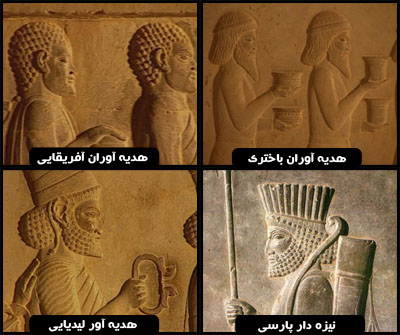
Who is his brother?!
Another point is to examine Akhshorash's personality, which of the Achaemenid kings can he be considered equal to?! Interestingly, by examining this issue, the ambiguities and contradictions increase.
Some consider Akhshor as Ardeshir because his name is in Haftadgani (The Greek translation of the Old Testament, which was made many years after the Achaemenids) It is written as Artaxerxes, which is the same spelling of Ardashir's name in Greek, and we also know that three kings with the official name of Ardashir ruled during the Achaemenid period.. The point is that the name of Ardashir appears in a different form in other parts of the Jewish sources and this name is mentioned for a person apart from Akhshurash, for example, in the fourth chapter of the book of Ezra, the name "Arte Khashta" is mentioned, which is clearly similar to the ancient Persian form of this name. That is, it has "Arte Khashtara" and even before that, the name of Akhshur is mentioned as another king who ruled before Arte Khashtara.. So, naturally, this name cannot be the same as the name of Ardeshir.
Some evidences point to the similarity between Xerxes and Xerxes, for example, some of the characteristics of Xerxes that are expressed in the story are close to the Xerxes mentioned in some Greek sources, also the names of Xerxes and Xerxes are very similar.. But Greeks such as Herodotus, Ctesias and Aeschylus have said that Xerxes had only one queen named "Ames Tris" and there is no mention of changing the queen in the words of these historians. (See: Herodotus, 7, 61 and Ctesias, 20, 6 and Aeschylus, p. 374). Ames Tris, the daughter of one of the Persian elders named "Othanes" (The equivalent of Hoten in the Biston inscription) It is introduced and there is no mention of the Jewish wife of Xerxes.
According to the ancient works left from the time of Xerxes, a different face is drawn from him, which may weaken the identity of Xerxes and Xerxes. (For example, see: A look at the new inscription of Xerxes and its content). Again, we point out that according to the Achaemenid inscriptions, including the official inscriptions of Xerxes, the Achaemenid Empire had twenty or so provinces, and 127 provinces are mentioned in the story of Esther.. These cases show that the sameness of Akhsherash and Xerxes is facing a challenge.
But the point that seriously challenges this discussion is that according to the book of Esther, Mordecai was exiled by Nebuchadnezzar, the king of Babylon. (Esther, 2, 7). If we accept that this story is in the peak period of the Achaemenid period - now in the period of Xerxes or Ardashir I- happened, the event of Mordecai's exile must be more than 100 years before the events of this story, if this story is related to Ardashir II or Ardashir III, the distance between Mordecai's exile becomes very long. According to this issue, the age of Mordecai seems very old and unreasonable, the same person who is working in the court and saves the Jews from destruction with great effort and effort..
These cases show that there are many contradictions in Esther's story and the author of Esther's story was not familiar with Iran's history. It is even possible that several kings were mixed together and finally the story of Esther took on legendary and mythological characteristics; At such an age, Mordechai is more suitable for a mythological figure.
Exaggerations and legendary cases in the book of Esther
In many ways, Esther's story is similar to a novel, and many exaggerations can be seen in it, even similarities with Babylonian myths can be seen in this story; In this section, we try to mention some of these cases.
The author of the book of Esther seems to have known about the thoughts and minds of the characters. For example, in the sixth chapter, after the king asks Haman : "What shall be done with the one whom the king wishes to honor?" is written in the text of the book of Esther.: Haman thought in his heart, who else would the king wish to honor him?. It means that the author of this story was an all-knower who knew about the emotions and thoughts of the characters.
In the story of Esther, the people who act against the Jews are in some way related to the basic enemies of the Jews with whom they have been hostile for a long time.. According to this story, a person from the non-Iranian tribe of Amalek named "Haman" reaches a high position in the government! Interestingly, according to Jewish sources, this people has been anti-Jewish for a long time (The first book of Samuel, 15, 33). It is not clear how this non-Iranian person reached this position in the government! Also, in the commentaries written for the book of Esther in the Talmud, Achshurash is read in connection with Nebuchadnezzar. (Bablyonian Talmud, IV, P.27); Nebuchadnezzar is the Babylonian king who exiled the Jews to Babylon by attacking Jerusalem. In short, the negative characters of the story are connected with the main enemies of the Jews.
Those who oppose the Jews have the characteristics of mythological figures. For example, Esther is as beautiful as the gods and everyone is fascinated by her beauty. Also, about Markhai, as mentioned, if we accept that this story is in the peak period of the Achaemenids - the current period of Xerxes or Ardashir I- has happened, Mordecai's age is almost 100 years. This age is more similar to the age of the first characters and heroes of myths.
In this story, an irresponsible figure is drawn from the king of Iran, while according to this story, this king rules 127 provinces from India to Abyssinia with full power.! Because Mordecai did not bow to him, Haman decides to destroy all the Jews, and the king very simply allows Haman to destroy the Jews, later when the king realizes that the Jews are innocent, he very simply allows the destruction of the enemies of the Jews. Esther and Mordecai gives! How could this king keep this huge territory if he makes new decisions about the tribes every so often?!
In this story, it is said that the Jews had 77 thousand enemies and they destroyed them, this number, in addition to the fact that there are two 7's together, seems to be very exaggerated. (Of course, in some writings, 75 thousand enemies are mentioned). It has been seen many times that various tribes and nations have exaggerated the number of their enemies in their epics and legends in order to convey their power or oppression..
In this story, it is mentioned about a banquet that lasted for 180 days and the princes and lords of the provinces came to the presence of the king. This period seems exaggerated and unbelievable, and there is no mention of such a celebration among Iranian celebrations, and no Iranian celebration lasts for 180 days..
Some researchers believe that the names mentioned in this story are very similar to the names of Babylonian and Elamite gods: Esther's name is equivalent to Ishtar's name, Mordecai is similar to Marduk, their enemy Haman can be considered the same as Haman, an Elamite god, based on linguistics.. Vashti Mekele of Pars, who is replaced by Esther, can be matched with Mushti Izad of Elam in the same way.. The similarities are so many that it cannot be considered a coincidence, but the similarity of the names with the names of the gods shows that the source behind this book is [Perhaps] It is about the mythological conflict between Babylonian and Elamite gods. Since Marduk (Mordechai) and Ishtar (Esther) They win, so this legend was told in Babylon, and it has clear historical and linguistic evidence that Purim probably originated from Babylon. (Eddie, p. 292).
As you can see, this story has many exaggerations, as if the events of the story take place among gods and goddesses.. Of course, the existence of such exaggerations in such a legendary story is natural.
Tomb of Esther and Mordechai
There is a tomb attributed to Esther and Mordechai in the city of Hamedan, Iran. It should be noted that this is not the only tomb that is attributed to people in the story of Esther, but there is also another tomb in Bram (Bar’am) There is.
As we mentioned, it is very difficult to accept this story from a historical point of view, and as a result, it can be said that the existence of such a tomb is faced with many uncertainties.. About the tombs, it is necessary to see what has caused such an impression. Are there any works and evidence for this matter or not?!
This is despite the fact that before there have been such mistakes about the ancient monuments of Iran, in this regard, we can refer to the Parse Palace, which is called the "throne of Jamshid" and the "Mausoleum of Cyrus the Great", which is called the tomb of Suleiman's mother.. Therefore, if a tomb is only attributed to a person or persons, it is not acceptable. By the way, it is a common and common issue that the general public, over time, willingly or unwillingly, links unknown buildings to myths and epic heroes..
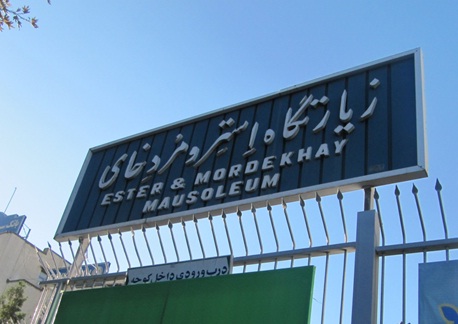
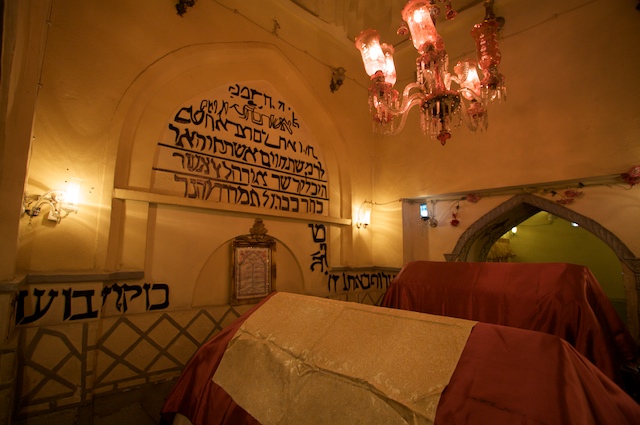
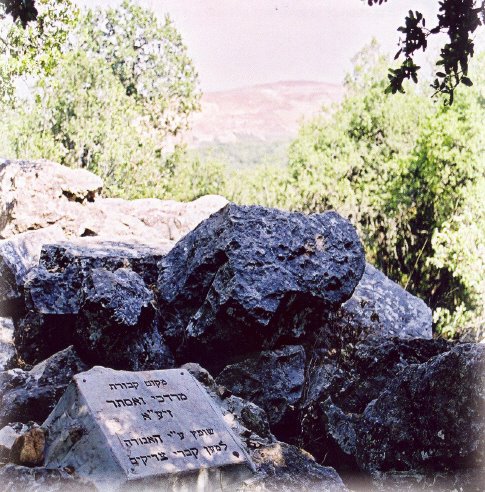
What do the distorted stories say?
For some time, distorted stories of Esther's story have been promoted in Iran. Of course, the details of all the distorted stories are not the same, and sometimes we face changes in these stories, but their generalities are the same..
You may have heard the distorted story of Esther and Mordecai:
A person named Mordechai - who was a Jew- After some time, he infiltrates Xerxes' system and at the same time Xerxes, while drunk, orders his wife Vashti to appear naked in the crowd, but Vashti does not accept, and this makes Xerxes angry.. Therefore Mordecai persuades Xerxes to leave his wife and after this Mordecai his nephew (Or his own cousin) That is, "Hadesa", which will be called Esther later, with different methods (Like Jadu Jambal!) Xerxes gets married. When Esther becomes the empress of Iran, she brings many Jews to high ranks. Haman - a powerful Iranian minister - learns about Mordecai's conspiracy and he listens to Xerxes and asks him to expel the Jews from Iran and the king agrees.. When Mordecai finds out about this, he plots with Esther and organizes a party. At that party, Esther made Xerxes very drunk, and on the night of the 13th of April, the Shah of Iran, while drunk, ordered the execution of Haman and seventy-seven thousand Iranians, and on the 13th of April, fifteen Iranian people were massacred..
Most of those who narrate this story or similar stories cite Jewish sources and even claim that such a story was narrated in Jewish sources.. But such a story with this structure does not exist at all in Jewish sources. At least those who consider the story of Esther as a historical story have a source for their statements, while the distorters first distort the story in the book of Esther and then make this distorted story a historical truth without investigation and argument. they know!! In this section, we mention some famous cases of these distortions.
The first issue is that Xerxes is mentioned in the distorted story, usually without any doubt, as mentioned, it is not clear who is Xerxes in the story of Esther, and it even has serious contradictions with the Achaemenid period and Xerxes, but many Some of the distorters consider this event related to Achaemenid Xerxes, without any reference to these ambiguities..
According to the distorters, it is usually said that Mordecai causes the removal of Vashti, but according to the book of Esther, one of the elders named Mammokan suggests to the king to remove Vashti due to disobedience.(Esther, 1, 16). According to the interpretations of the book of Esther in the Talmud, Mamoukan is introduced as "Haman". (Bablyonian Talmud, IV, P.29) Therefore, it is not mentioned anywhere that Mordecai caused the removal of Vashti.
Many distorters believe that "the Jews in the court were busy creating a network and Haman realizes this. When Esther finds out that Haman has found out, she tells the matter to Mordecai the Jew, and this causes Haman to be killed.. If, according to the book of Esther, Haman, who is offended by Mordecai's disrespect and not bowing to him, harbors the hatred of the Jews and asks the king for permission to kill all of them with reasons such as that the laws of the Jewish people are against all nations. destroyed (Esther, 3).
In the following, it is said that the Jews get the order to kill Haman and 77 thousand Iranians from the king. Now, what is the definition of being Iranian? Because there were various nations in the Achaemenid Empire. In the book of Esther, it is said about this work of the Jews: "And the Jews gathered in their cities in all the provinces of the king, to lay hands on those who wanted to harm them..." (Esther, 9, 2). In general, it is emphasized in the book of Esther that these 77 thousand people were the haters of the Jews throughout the country ( Esther, 9, 16). It is natural that the Jews believe that since they were subject to destruction; They destroyed these enemies. As mentioned before, it has been seen many times that various tribes and nations have exaggerated the number of their enemies in their epics and legends in order to convey their power or oppression.. Since many evidences show that the story of Esther is also legendary, this number of 77,000 is one of the other reasons that strengthen its legend..
The point that is noteworthy here is that the king allows the Jews to destroy the children and women of their enemies and even allows the Jews to extort.: "The king allowed the Jews who were in all the cities to gather and resist for their lives and to destroy, kill and waste all the strength of the tribes and provinces who wanted to hurt them, along with their children and women. and loot their property..." (Esther, 8, 11). But when it comes to killing the Jews, the book of Esther says: "The rest of the Jews who were in the king's provinces gathered and resisted for their lives, and when they had killed seventy-seven thousand of their enemies, they found peace from their enemies, but they did not raise their hand to plunder..." (Esther, 9, 16). The book of Esther suggests that the Jews did not even use all that the king had given them. This story paints an irresponsible face of the king, and on the other hand, it paints a righteous face of the Jews who destroyed their enemies..
We see to what extent the writings of the book of Esther have been distorted, and at the same time, its speakers refer to the book of Esther and even consider it a historical event.. If their statements have no historical support and there is no such thing in any historical source.
Examining Thirteen Doors and its irrelevance to the story of Esther
So far, we have investigated the story of Esther and the distorted stories from it, we have seen that the story of Esther cannot be proven as a historical event at all and remains more like a legend, and also the distorted stories of it have no support.. So, it can be said simply that this story cannot be the reason for the 13-door celebration. But in this section, we will review Thirteen to the Door.
Perhaps, the issue of 13's desperation is one of the things that led the distorters to link 13's to the massacre of Iranians.! They say that we leave our homes because our ancestors were facing destruction and that is why this day is sad.. But it should be investigated when and how the issue of being a narcissist of 13 was formed?! The point is that by examining the sources related to the ancient times, there is no sign of the 13th being a bad person.
When we look for the background of Thirteenth Day, we find that there is no direct and accurate reference to the existence of the Thirteenth Day Festival in historical books before Qajar, and this issue creates speculations that this festival has no connection with the ancient period.. But the universality of this celebration among the people, as well as the history of various celebrations in ancient Iran, leads us to the conclusion that this celebration may be a relic of ancient times..
Anyway, in ancient sources we have references to the thirteenth day of the month. In the Iranian calendar, each day of the month has a special name, and the name of the thirteenth day is "Tir". (Tishter) Is. In Zoroastrian religion, the thirteenth day belongs to Tir, the god of rain, and this god has a high place in this religion.. In the Avesta Yashts, there is a section dedicated to this god and it is called Tishtar Yasht. (Taghli, p. 51) In this verse, Tishtar's battle with Apush, the demon of drought, and the victory of this god over him and the results are mentioned.. (Tafzali, p. 51) Arash's shooting is one of the points worthy of attention in this episode (Clauses 6, 7, 37 and 38) and this is the oldest source that mentions the name of this hero (Tafzali, p. 52) Therefore, the thirteenth day is considered an auspicious day in Iranian culture, and in ancient sources, the thirteenth day is mentioned as good..
But when we search specifically about "13th of Farvardin" in the sources, the auspiciousness of this day is mentioned again.. In al-Baqih al-Biruni, there is a table for the days of Saad or Nahs, in which the 13th of Farvardin is mentioned as "Saad". (Outside, p. 359)
It is known that the word "Sizdeh Ba Dar" means "to open the door like thirteen".. But when we look at the meanings of the words, we can have another understanding of this word. "Dar" can be replaced instead of "valley and plain", for example, Allameh Dehkhoda considers the word "Dar wa Dasht" to be an abbreviation of "valley and plain". This issue is also revealed from this verse of the Shahnameh:
Because both armies have arrived
You said that it is in the plains
One of the meanings of the word "to" is "toward".. Like when we say we are going to the store. So, with a general view, it can be said that the word "Sizdeh Be Dar" means "Thirteenth towards the door and the plains", which means going out and being in the lap of nature..
One of the reasonable hypotheses about the Thirteenth Day celebration is that after twelve days of Nowruz, which commemorates the twelve months of the year, the thirteenth day of Nowruz, which is an auspicious day, goes to the garden and the desert and rejoices. In this way, the formality of Nowruz period ends.
In Iranian sources, we do not see any trace of the story of Esther, and there is also no trace of the number thirteen and the thirteenth day of Farvardin being negative.. It is not mentioned anywhere that the 13th of April was caused by the Purim incident. Only in modern times do we come across this theory that the narrators of this issue often reach the conclusion by distorting the story..
The next point is that the date of Purim is not at all compatible with the Thirteenth Feast. According to the book of Esther, the events of Purim happen on the 13th and 14th of Azar (Esther, 9). It should be noted that the basis of the Jewish calendar is different from the basis of solar chronology, and the month of Azar is closer to the month of March.. In other words, this celebration is usually held before Nowruz.
For example, Purim was celebrated on March 17th in 1390, in March 5th in 1391, and on March 24th in 1392. (Hebcal Jewish Calendar, Purim). We know that the 13th of April festival is held every year on the 13th day of Farvardin, so even the dates of these two festivals are not the same, and every year it is almost a month - now more or less.- are far.
Conclusion
When it comes to the story of Esther, some foreigners have a type of approach to this story that indicates anti-Iranianism, and some inside Iran have other approaches to this story, and by promoting it, they add false facts to history. and Iran's civilization.
The book of Esther is faced with many contradictions and cannot be considered as an authentic historical source at all, the distorted stories from it have no foundation and are expressed without any historical support.. According to the evidence that was examined, it can be said that the story of Esther is more like a fairy tale.
The 13th of April has nothing to do with the story of Esther, and there is no source that proves such a connection. It can be said that according to ancient Iranian sources, the 13th day is considered an auspicious day, and there is no mention of the connection between Purim and the Thirteenth Door..
Some may pay attention to distorted stories because of confronting Zionism, but such a story does not exist at all in Jewish sources, and no evidence supports it, and it may even give the Zionists an excuse to take advantage of it..
At the same time, distorting the story of Esther and linking it to the Thirteen Door is welcomed by anti-Iranians, and in a way, they start to mythologize anti-Iran to achieve their goals.. It must be accepted that the promotion of such an issue ends up benefiting anti-Iranists more than anything else.
It is better to go to the story of Esther with historical analysis and research and promote those things that make sense about the story of Esther..
References:
Aeschylus. collection. Translated by Abdullah Kothari. Tehran: Ni publication. ١٣۹٠.
Eddy, Samuel Kennedy. Shahriari ritual in the East. Translated by Fereydoun Badrei. Tehran: Scientific and cultural publications. ١٣۴٧.
Biruni, Abu Rihan Mohammad bin Ahmad. Athar al-Baqiyyah on al-Qarun al-Khaliyah. Translated by Akbar Danasresht. Tehran: Amir Kabir. ١٣٨۶.
Tafzali, Ahmed. History of Iranian literature before Islam. Sixth edition, Tehran: speech. ١٣٨۹.
Holy book. Translated from the original Hebrew, Chaldean, and Greek languages. By the efforts of the Society for the Distribution of Holy Books among Nations. ۱۳۵۹.
Kezias. Summary of the history of Katzias from Cyrus to Ardashir (Known as the Summary of Photius). Translated by Zaheed Khalili. Tehran: Anarchy Caring. ١٣٨٠.
Dehkhoda dictionary
Herodotus. History of Herodotus. Translated by Morteza Saqib Far. Tehran: Mythology Publications. ١٣٨٩.
Bablyonian Talmud (1918), tr. by Michael L. Rodkinson Book 4: Tracts Pesachim, Yomah and Hagiga
Author's footnote : It should be noted that this article has been updated and moved to Khordegan's database: http://kheradgan.ir/?p=9942


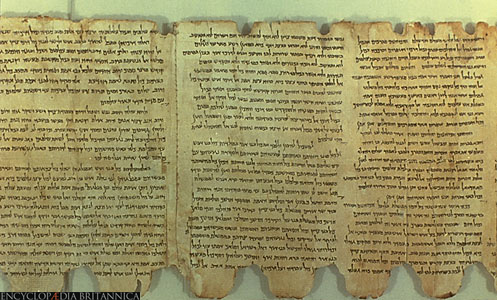

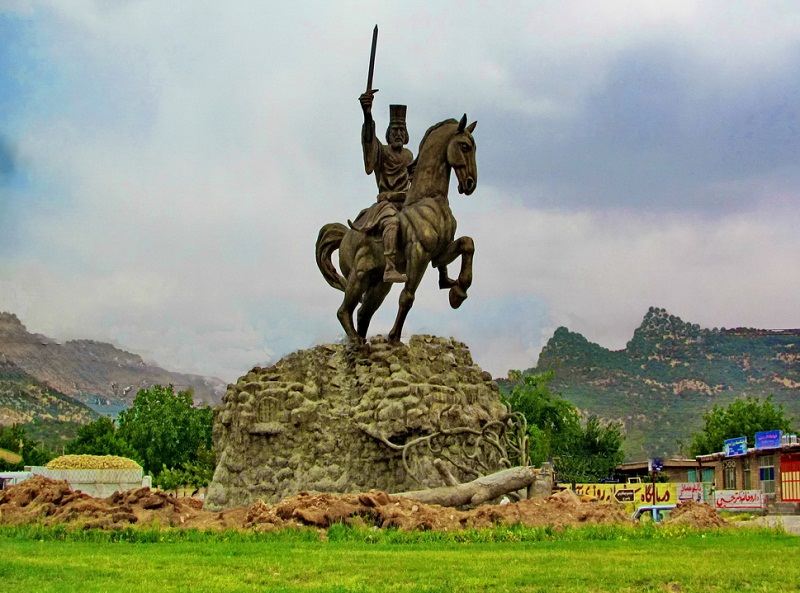
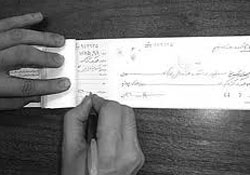
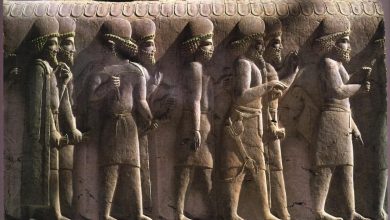
Thank you for your clarification. Unfortunately, some people are trying to create a fake story to make people more enmity with Jews. There are many Jews who do not accept the Zionist regime . War between followers of different religions is a stupid thing . According to a legend, a group beats the drum of revenge against the Jews, they don't want to go to the legends, in the last hundred years, Russia and England have committed thousands of crimes on the soil of Iran. . Why don't you talk about revenge? . Now the Indians, Armenians, and Georgians must take revenge on us because Nader and Agha Mohammad Khan occupied the soil of their countries. .
themselves to massacre 80 A thousand people confessed, then you say it's a lie???!!! Are you a Jew yourself?
Exactly what they said
But here they use a trowel
Greetings and Regards
Please publish this article in response to the fakers who make the 13th of Badr a celebration of Iranian Jews.:
About the link between Jewish Purim and Iranian Thirteen Badr
http://anruzha.blogfa.com/post/176
Hi. Although I mentioned before that there is no name of the original author in this article (Majid Khalekian)No, it is not the main source of it (Now what about Ahura Campus and what about Khordegan) We still see that this false condition exists!! Is this something other than plagiarism?! It should be noted that this article has been updated and moved to Khordegan's database: http://kheradgan.ir/?p=9942
You must know that in correct citations, the author's name and surname, the last update, the title of the article and the address of Rayatari Bin Mayeh must be mentioned.. Otherwise, it is considered plagiarism. As I said before, one of the main reasons for my dissatisfaction with the Persians of Dej was this article.
Greetings, Mr. Khalekian, according to your statement, the source of the text is mentioned at the end.
If another article has these conditions, please let me know and the article will be corrected.
be mana
Peace be upon you.
It was great, but we don't have time to study, it would be better if you read the final result in summary, even though you rejected the obvious topic, thanks anyway.
The people of Hamedan are protesting that the word shrine has been removed from the door. Now, really, why is there a shrine? Who are they who should be visited? It is surprising that no one has updated the people.!
Of course, it is greatly exaggerated. I read that half of Iran's population was killed at that time. Are there any sane people, except those who killed them were not Iranians? They killed their own countrymen blindly because of an order.
An atomic bomb cannot kill half of a country's population. I think this story is nonsense
Is the shrine only for us Muslims? Can't others have shrines?
Why do you hit the door and the wall?
Why do you like to associate everything that is a crime with Islam?
Yes, read history to understand what happened to Iran before Islam
Read history to understand what crimes were committed in the world before the advent of Islam!
درود
If the story of Esther is a lie, then what does this disturbing story of Esther and Mordecai say? What does it mean?
Really, what do you think about the documentary Arbaban Jagal? Unfortunately, there is no mention of the investigation and whether it is true or not in any website!!!
It is definitely a lie
is it possible? do we have